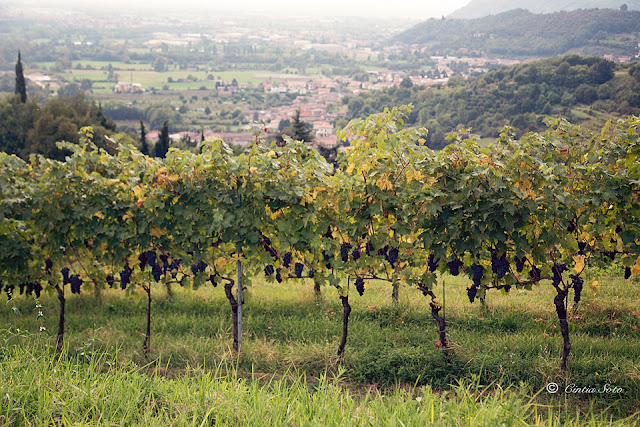Church of Santo Stefano del Monte.
The church of Santo Stefano del Monte stands isola-ted on the top of the hill dominating the village of Candia Canavese with a panoramic view on the Mo-rainic Amphitheatre of Ivrea, the lake of Candia and the ring of the Alps. It was built between the 11th and 12th century and together with the Cathedral of Ivrea and the Abbey of Fruttuaria, it represents the main example of Romanesque Architecture in Canavese.
The first document on the Church of Santo Stefano was a Papal bull dating back to 1177. It assigned the Church and its priory to the monks of the Hospice of Monte Giove (the Great Saint Bernard Pass).
Looking at the façade, on the left side of the entrance, you can notice signs of a bell tower now disappeared. The church was built out of bricks and pebbles and it looks rather bare. The upper part of the external walls was decorated by small fired brick suspended arches. The back of the church is characterized by a central truncated apse and two smaller lateral ones. Adjacent to the southern side of the church and protected by a fencing wall, there is an area with the ruins of the ho-spice where the monks gave hospitality to the pil-grims travelling through Europe along the routes of the ancient “ Vie Francigene o Romee”. This church is a perfect example of Romanesque architecture. Its structure with the central nave and the two aisles can be admired in other churches built in Canavese in the same period. The nave and the two aisles are sepa-rated by walls with arches sustained by large qua-drangular pillars. At the back of the central nave, you can visit the raised presbytery. The most suggestive part of the church is the crypt situated under the presbytery. It was built later (though always in the Middle Ages) out of reused materials. The vault is supported by slender stone columns on top of which you can see capitals from barbarian age (6th and 7th century). In 1564 the whole estate of the church be-came property of the diocese of Ivrea. Since then, the story of the church was witnessed in the reports of the bishop’s visits.
The Medieval decorations are completely disapeared. It is still possible to admire some later frescoes, for example some scenes of the Ciclo della passione (Pas-sion cycle) and the vault of the Cappella del Paradiso (Paradise chapel). A 16th century Danza Macabra (Dan-ce of death) is hardly visible on the external northern wall. All the naïf portraits can be attributed to modest fresco painters. Noteworthy is a statue of painted ala-baster of excellent workmanship, representing a Ma-donna con Bambino dalle bacche rosse (Madonna and child with red berries). It dates back to the 15th century and it has recently been attributed to the Flemish sculptor Jean de Prindall, who worked in Chambery at the court of the Duke of Savoy in the early decades of the 15th century.
A big thank you to my friend Franco Vassia for the information.
A big thank you to my friend Franco Vassia for the information.











Comments
Post a Comment